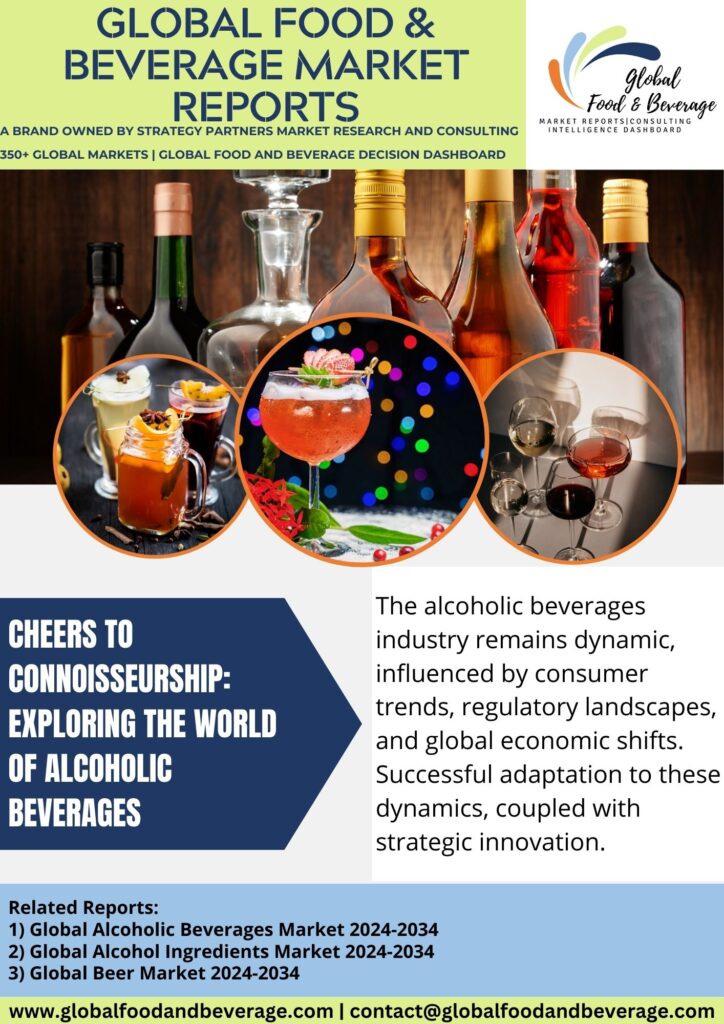Alcoholic beverages have held a prominent place in human history, culture, and social gatherings for centuries. From ancient rituals to modern celebrations, these libations span a diverse spectrum of flavors, production methods, and cultural significance. This comprehensive exploration delves into the rich tapestry of alcoholic beverages, encompassing the origins, classifications, production processes, cultural significance, and evolving trends.

Origins and Historical Significance:
The roots of alcoholic beverage production trace back to ancient civilizations, where fermentation became an accidental discovery. Early humans observed the transformative effects of natural processes on fruits, grains, and other fermentable substances. As societies developed agriculture, intentional fermentation emerged as a means to preserve and enhance the nutritional value of food.
In Mesopotamia, around 7000 to 6000 BCE, evidence suggests the cultivation of barley and the production of an early form of beer. Similarly, in ancient China, rice-based fermented beverages date back to around 7000 BCE. The Egyptians, Greeks, and Romans also embraced the art of brewing and winemaking, incorporating these beverages into religious rituals, daily life, and social customs.
Types and Classifications:
Alcoholic beverages are broadly categorized into three main types: beer, wine, and spirits (or distilled beverages). Each type undergoes distinct production processes, resulting in unique flavor profiles and alcohol content.
Beer:
Ingredients: Primarily made from malted barley, water, hops, and yeast, the beer boasts an extensive range of styles influenced by ingredients and brewing techniques.
Production: Brewing involves malting, mashing, boiling, fermenting, conditioning, and packaging. Varieties include lagers, ales, stouts, and IPAs.
Wine:
Ingredients: Grapes are the primary source for wine production, contributing to the beverage’s complexity and regional nuances.
Production: Winemaking includes harvesting, crushing, fermentation, aging, and bottling. Red, white, rosé and sparkling wines showcase diverse flavors and characteristics.
Spirits:
Ingredients: Derived from fermented grains, fruits, or sugarcane, spirits undergo distillation to concentrate alcohol content.
Production: Distillation separates alcohol from impurities, yielding a potent liquid. Common spirits include whiskey, vodka, rum, gin, tequila, and brandy.
Cocktails:
Ingredients: Mixologists craft cocktails by combining various spirits, liqueurs, juices, and flavorings, resulting in diverse and creative concoctions.
Production: Cocktails involve mixing and balancing ingredients to create a harmonious blend of flavors. Classic examples include the Martini, Mojito, and Old Fashioned.
Cultural and Social Significance:
Alcoholic beverages play a central role in cultural traditions, social rituals, and culinary experiences across the globe. They often symbolize hospitality, celebration, and the expression of regional identity.
Religious Rituals:
Wine, in particular, holds religious significance in many cultures. It features prominently in Christian sacraments, such as communion, and plays a crucial role in Jewish ceremonies.
Social Customs:
From toasting at weddings to sharing a pint with friends at a pub, alcoholic beverages are woven into the fabric of social interactions. They facilitate bonding, relaxation, and the creation of lasting memories.
Culinary Pairings:
The world of gastronomy embraces the art of pairing alcoholic beverages with food. Wine and food pairing, for instance, is a revered practice that enhances the dining experience, showcasing the complementary flavors of both.
Festivals and Celebrations:
Numerous festivals and cultural celebrations are intertwined with specific alcoholic beverages. Oktoberfest in Germany celebrates beer, while Champagne is synonymous with New Year’s Eve festivities.
Artistic Expression:
Alcoholic beverages inspire art and literature, serving as muses for poets, painters, and writers. The allure of a well-crafted cocktail or the ambiance of a vineyard can evoke creative expression.
Production Processes:
The art of crafting alcoholic beverages involves intricate and specialized processes, each contributing to the final product’s character and quality.
Fermentation:
Common to beer and wine production, fermentation is the conversion of sugars into alcohol and carbon dioxide by yeast. The choice of yeast strain influences the flavor and aroma.
Distillation:
Exclusive to spirits, distillation involves heating a fermented liquid to separate alcohol from water and other compounds. This process concentrates the alcohol content and imparts distinct flavors.
Aging:
Many alcoholic beverages, especially spirits, and some wines, benefit from aging in barrels or tanks. This process allows the drink to develop complex flavors, aromas, and desirable characteristics.
Blending:
Master blenders play a crucial role in creating consistent and high-quality beverages. They combine different batches or varieties to achieve a desired flavor profile.
Carbonation:
Carbonation is introduced to beverages like beer and sparkling wine to impart effervescence. This can occur naturally through fermentation or be artificially added.
Challenges and Trends:
The industry faces ongoing challenges and adapts to emerging trends that reflect evolving consumer preferences, health considerations, and environmental awareness.
Health Consciousness:
A growing emphasis on health and wellness has led to increased interest in low-alcohol and alcohol-free alternatives. Consumers seek beverages with lower calorie content and reduced negative health impacts.
Craft Movement:
The craft beverage movement has gained momentum, with consumers expressing a preference for artisanal, locally produced beers, wines, and spirits. This trend emphasizes quality, unique flavors, and small-scale production.
Sustainability:
Sustainability practices are becoming integral to the industry. Producers are exploring eco-friendly packaging, energy-efficient production methods, and sourcing raw materials responsibly to reduce environmental impact.
Innovation in Ingredients:
The use of innovative ingredients, such as exotic fruits, herbs, and spices, is on the rise. Craft brewers and distillers experiment with unique flavor combinations, appealing to adventurous consumers.
Technology Integration:
Technology plays a role in improving production efficiency, quality control, and distribution. From precision fermentation to blockchain for supply chain transparency, the industry leverages innovation for progress.
Globalization of Tastes:
Increased travel and cultural exchange contribute to a more diverse and global palate. Consumers explore beverages from different regions, fostering a greater appreciation for the unique characteristics of each.
Conclusion:
Alcoholic beverages, with their deep historical roots and ever-evolving nature, continue to be an integral part of human culture. From the traditional brewing methods of ancient civilizations to the modern craft movement and sustainability initiatives, the industry adapts to meet the dynamic needs and preferences of consumers.
